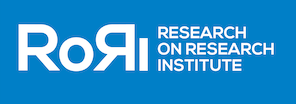OppNet: an interview with Dr William N. Elwood
OppNet is the NIH’s Opportunity Network for basic behavioral and social science research grants. Dr William N. Elwood, OppNet’s Facilitator, kindly sent us this short interview about the network and applications to it.
Please give our readers an overview of the aims of the OppNet initiative.
Simply put, OppNet is a truly trans-NIH initiative to expand the agency’s extramural funding of basic behavioral and social sciences research (b-BSSR). All OppNet members share a common aim: to increase NIH’s extramural research on basic mechanisms of behavior and social processes that relate across NIH’s Institutes, Centers, and Offices (ICOs) and across public health challenges. Toward that end, all OppNet’s funding opportunities complement existing NIH initiatives and portfolios in b-BSSR.
OppNet’s official mission statement and two main goals are as follows: “The mission of OppNet is to pursue opportunities for strengthening basic behavioral and social science research (b-BSSR) at the NIH while innovating beyond existing investments.
• “OppNet advances basic behavioral and social science research through activities and initiatives that build a body of knowledge about the nature of behavior and social systems.
• “OppNet prioritizes activities and initiatives that focus on basic mechanisms of behavior and social processes; that are relevant to the missions and public health challenges of multiple NIH Institutes, Centers and Offices (ICOs); and that build upon existing NIH investments without replicating them.”
Tell us how the administration of OppNet works and how the NIH Institutes, Centers, and Offices are involved.
All 24 NIH Institutes and Centers (ICs) that fund research and four program offices within the NIH Office of the Director fund and manage this initiative. Our Steering Committee consists of ICO Directors or their designees. Their suggestions and questions consistently impress me. Drs. Jeremy Berg and Richard Hodes are involved co-chairmen who also value NIH program directors and our extramural communities for their respective expertise. These two Institute Directors (National Institute of General Medical Sciences and National Institute on Aging, respectively) have received commendations from academic associations and the Congress for their respective Institutes’ research and training in the social and behavioral sciences.
The involvement of our other directors might surprise you. For example, when Dr. Lawrence Tabak, NIH’s Principal Deputy Director, met with a small OppNet group regarding the final funding process for our FY2010 grants, he made comments about some of the research projects and asked specific questions about others. Our 2011 funding opportunities expressly invite model-animal researchers to apply. That’s a direct result of National Institute of Neurological Disorders and Stroke (NINDS) Director Dr. Story Landis’ involvement. Not only did she encourage all the concept teams to account for model animals as each team wrote a FOA, but also she asked detailed questions throughout the writing and approval process to be certain they made this happen. Even better, she was impressed with the result.
It likely won’t surprise your readers that Drs. Berg, Hodes, and Tabak presented at plenary sessions at our October 2010 conference. Yet many of the conference participants were surprised that Drs. Berg and Hodes facilitated a discussion for extramural researchers and that Drs. Gregory Germino and Mary Kerr (the Deputy Directors of the National Institute of Diabetes and Digestive and Kidney Diseases [NIDDK] and National Institute National Institute of Nursing Research [NINR] respectively) attended and played substantive roles in our breakout sessions!
Our Coordinating Committee has a program director-level member for every ICO/member. We also have a group that I refer to as the “OppNet friends,” NIH employees with expertise and/or interest in b-BSSR. The Friends often attend our meetings and participate on our workgroups, including the teams that wrote our FOAs. Your readers always can find the list of committee members on our Web site.
OppNet and its partner institutes have demonstrated a strong effort to involve researchers in the decisions about emerging opportunities in basic social and behavioral research. What steps have you taken, and what plans do you have, to make sure OppNet fosters timely basic social and behavioral health research?
We in OppNet definitely listen to our stakeholders—extramural researchers and advocates alike–and we include their views in our planning process. For example, some of your readers–among other researchers—were among the 318 respondents to OppNet’s Request for Information (RFI) that accepted data during January and February 2010. Our detailed analyses of these data play a substantive role in our short-and longer-term strategic planning process. For example, the breadth and depth of responses regarding circadian rhythms and sleep issues led a team of NIH program directors to propose this topic for potential funding opportunities. With approval from our Coordinating and Steering committees, they now are FY2011 funding opportunity announcements (FOAs).
We followed our RFI with a public input-focused our conference on October 28-29, 2010, in downtown Washington, DC. Participants spent the majority of their time in topic-specific breakout sessions to provide OppNet with information on the following topics:
• Cognition and emotion
• Culture and health
• Decision-making
• Development over the lifecourse
• Gene-environment interactions
• Model animals, human applications
• Neuroscience approaches in basic behavioral and social science research (b-BSSR)
• 21st Century trans-disciplinary approaches in b-BSSR
• Use of b-BSSR advances in future applied research
The NIH and extramural facilitators for each topic made brief presentations during conference plenary sessions. At present each group is at work on reports that OppNet will rely upon for its next planning round. Once we have all conference materials available, we’ll develop a page within the OppNet website for the public’s perusal. Included in those materials will be a recording of all plenary sessions.
How is OppNet funded, and for how long?
NIH founded OppNet as a five-year initiative to sunset at the end of the 2014 fiscal year. In our first year, we had $10 million in funds from the American Reinvestment and Recovery Act and an additional $2 million from the Office of AIDS Research. If the Congress passes the OppNet-specific portion of the President’s 2011 budget, the NIH Director’s Office will fund half of our $20-million budget; the other half will come from the 24 ICs using an assessment based on each IC’s overall Congressional appropriation. The fact that this assessment is based on overall budget, not on an Institute’s social/behavioral budget, demonstrates a strong commitment to the behavioral and social sciences. The plan for OppNet’s final three years is $30 million each year.
How will NIH facilitate reviews for OppNet applications?
In FY2011, all OppNet’s funding opportunities are RFAs. Requests for applications almost without exception result in RFA-specific review panels. Consequently, NIH’s Center for Scientific Review will convene special emphasis panels for all our 2011 funding opportunities, save OppNet’s R13 RFA (RFA-CA-10-017). CSR seldom reviews the R13 mechanism, so the host IC for this OppNet FOA, NCI, also will host the review panel. Most of our RFAs request letters of intent; our program directors and scientific review officers will use the letters not simply to estimate the number of applications we’ll receive, but also to recruit experts who apparently plan not to apply!
Do you have any advice for scientists who are preparing applications—what should they emphasize?
First, all OppNet’s 2011 funding opportunities are one-time RFAs. I said that earlier, but it bears repeating in this context. We have no plans to reissue them.
Second, scientists should search for OppNet FOAs by going first to OppNet’s Web site or to search the NIH Guide to Grants and Contracts with “OppNet” as a search term. OppNet has a discrete funding pool but cannot issue funding opportunities using its own two-letter code, “OP.” Instead, we rely on our members to serve as “Host ICs” that issue FOAs with numbers that use each host IC’s two-letter code. The NIH IC that issues an OppNet FOA for public consideration is not necessarily the NIH Institute or Center that ultimate will manage a funded OppNet project. For example, NIA released our RFA on self-regulation (RFA-AG-11-010), and NIA will provide the initial grant number to all applications that respond to this announcement; each application also will have a secondary assignment, OP, for OppNet. After the receipt deadline and before funding, OppNet program directors will review all the applications for responsiveness and for relevance to the 24 ICs. Applications most relevant to NIA will keep their initial numbers; the others will receive new numbers that reflect their respective reassignments. Applications withdrawn for lack of relevance or that will not receive funding will maintain NIA numbers regardless of focus. All applications will maintain their secondary OP designations, however.
Third, read each OppNet FOA thoroughly. This is an overall grantspersonship tip; nevertheless, it’s especially cogent for OppNet because the RFA framework allows NIH to withdraw unresponsive applications before they ever get to the review process. Confidentiality rules preclude me from disclosing how many OppNet applications we withdrew in FY2010. Nevertheless, I can tell you that I completed all the paperwork to withdraw these applications and contacted every investigator and signing official for every application. These tasks led me to conclude that this is an important tip to share with researchers.
Fourth, write a one page concept paper and send it to a program officer listed on the RFA. Obviously, this is an overall good grantspersonship recommendation—but it’s superb practice for researchers who want their respective OppNet applications to make their way through the peer review process for potential funding consideration afterward.



















































































